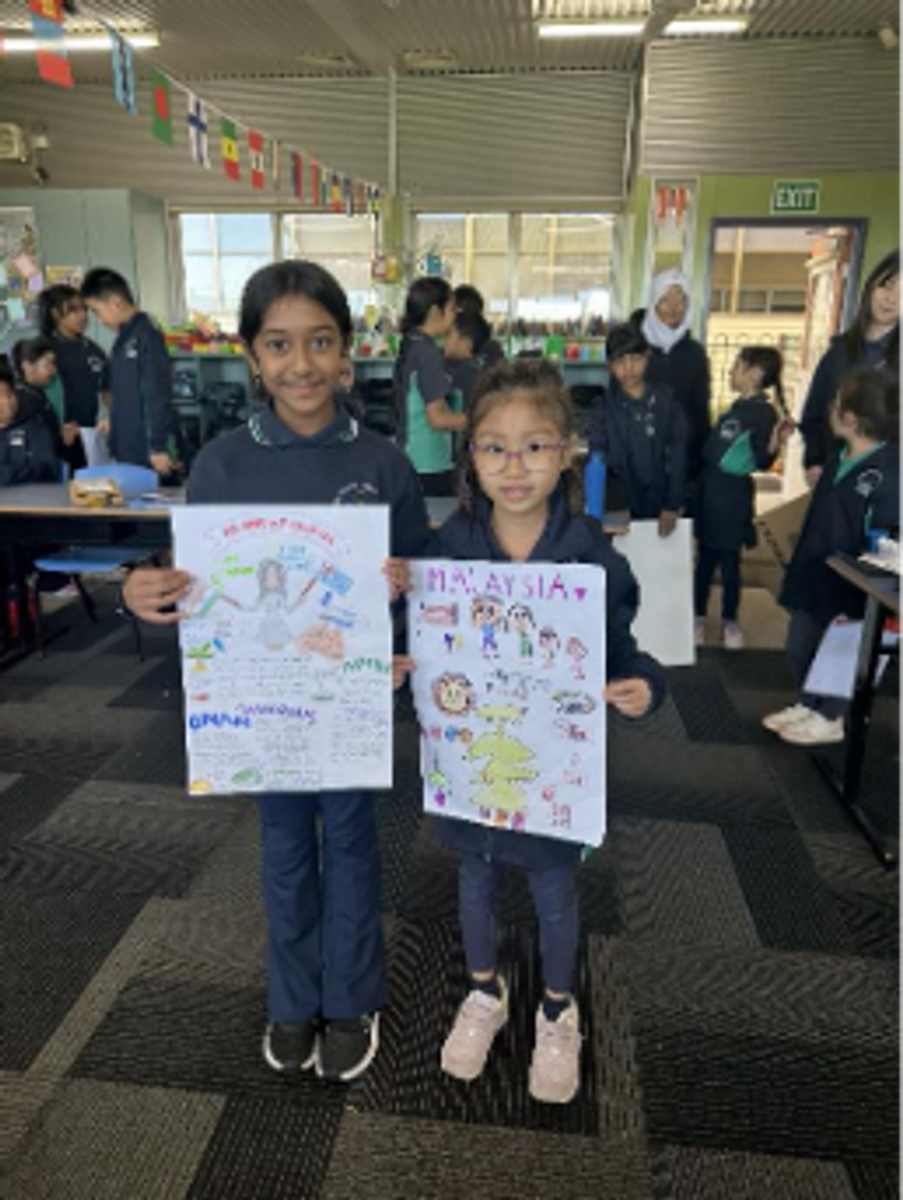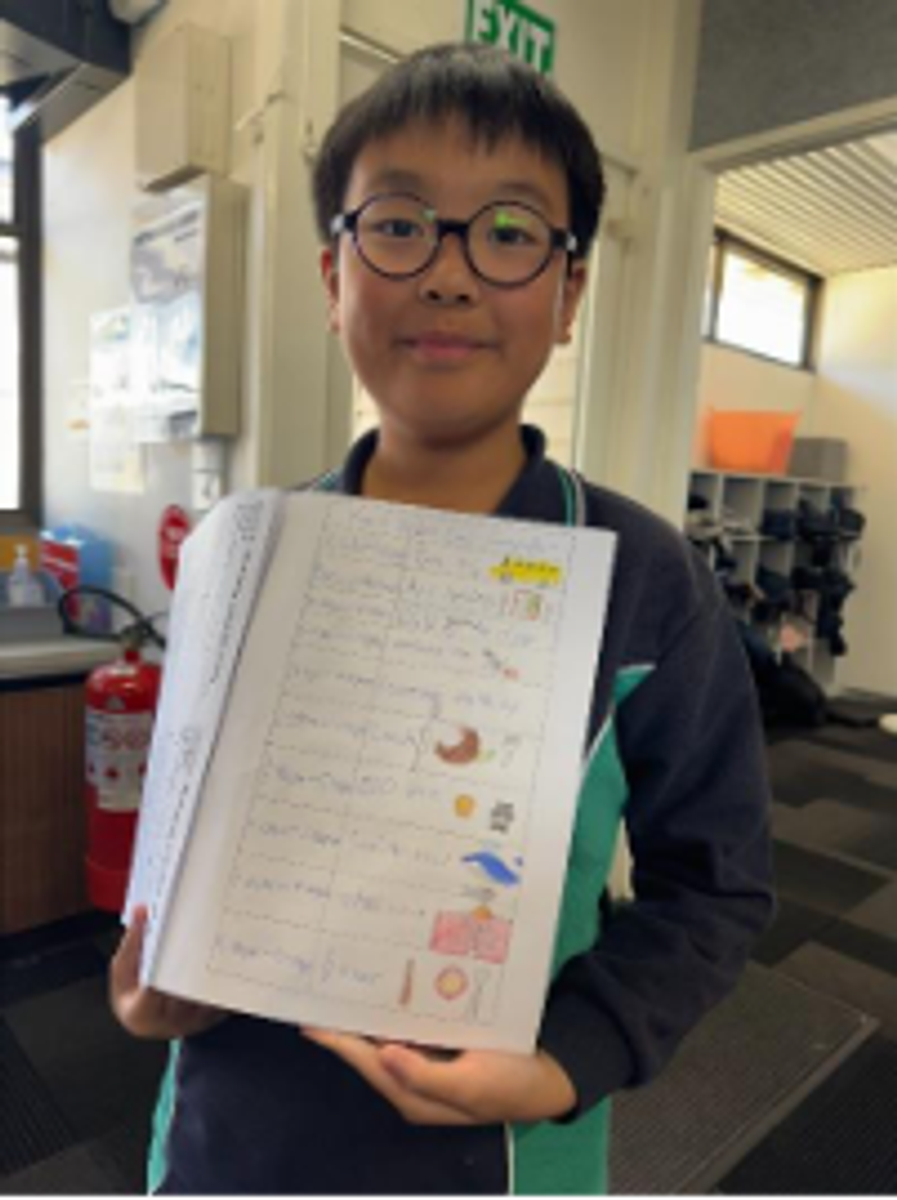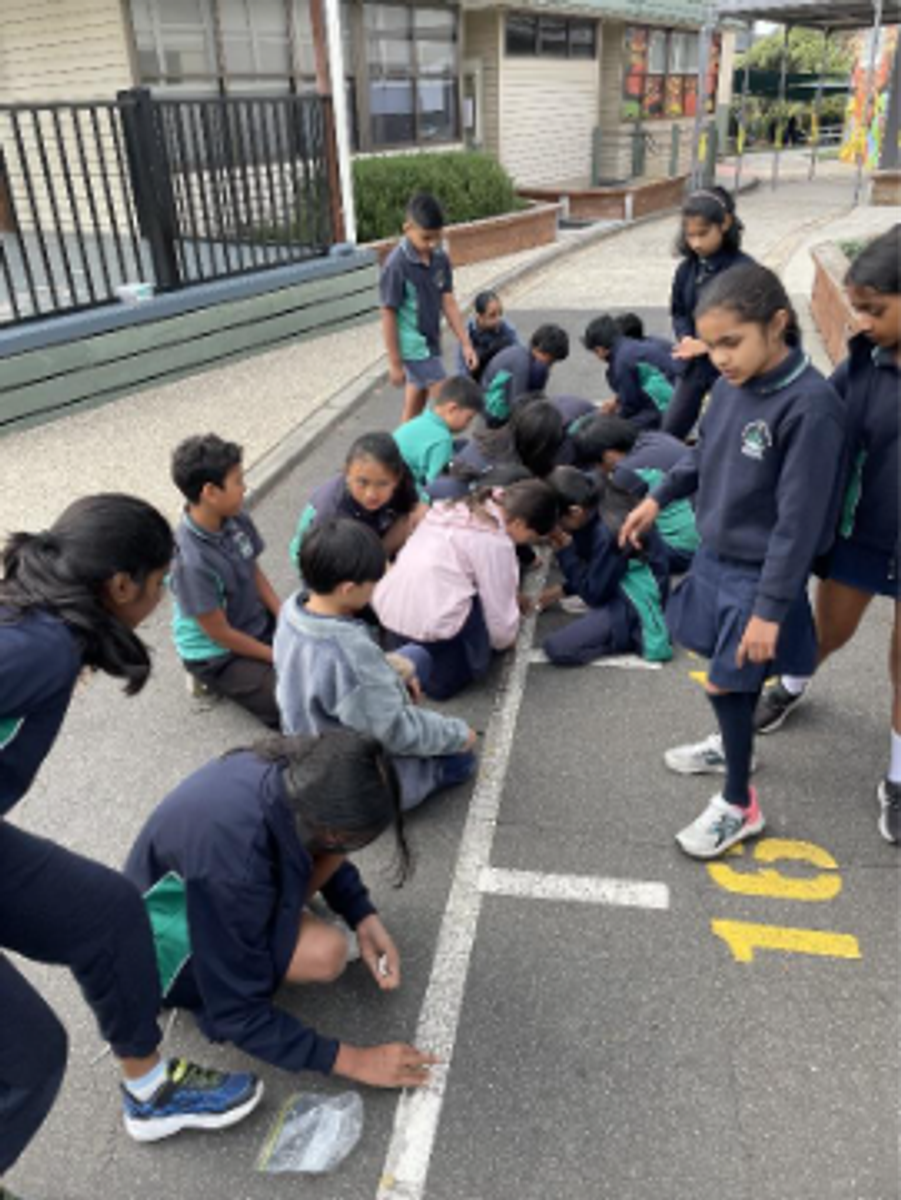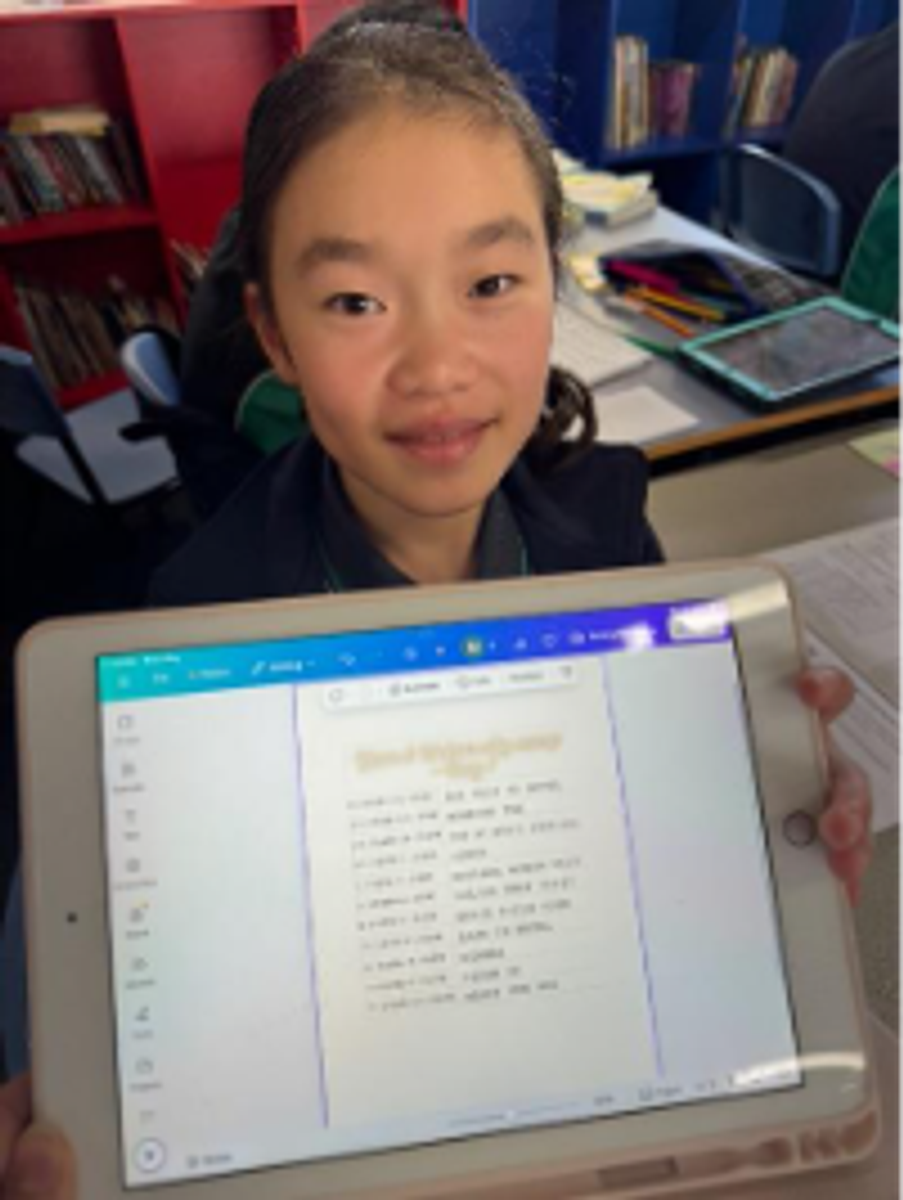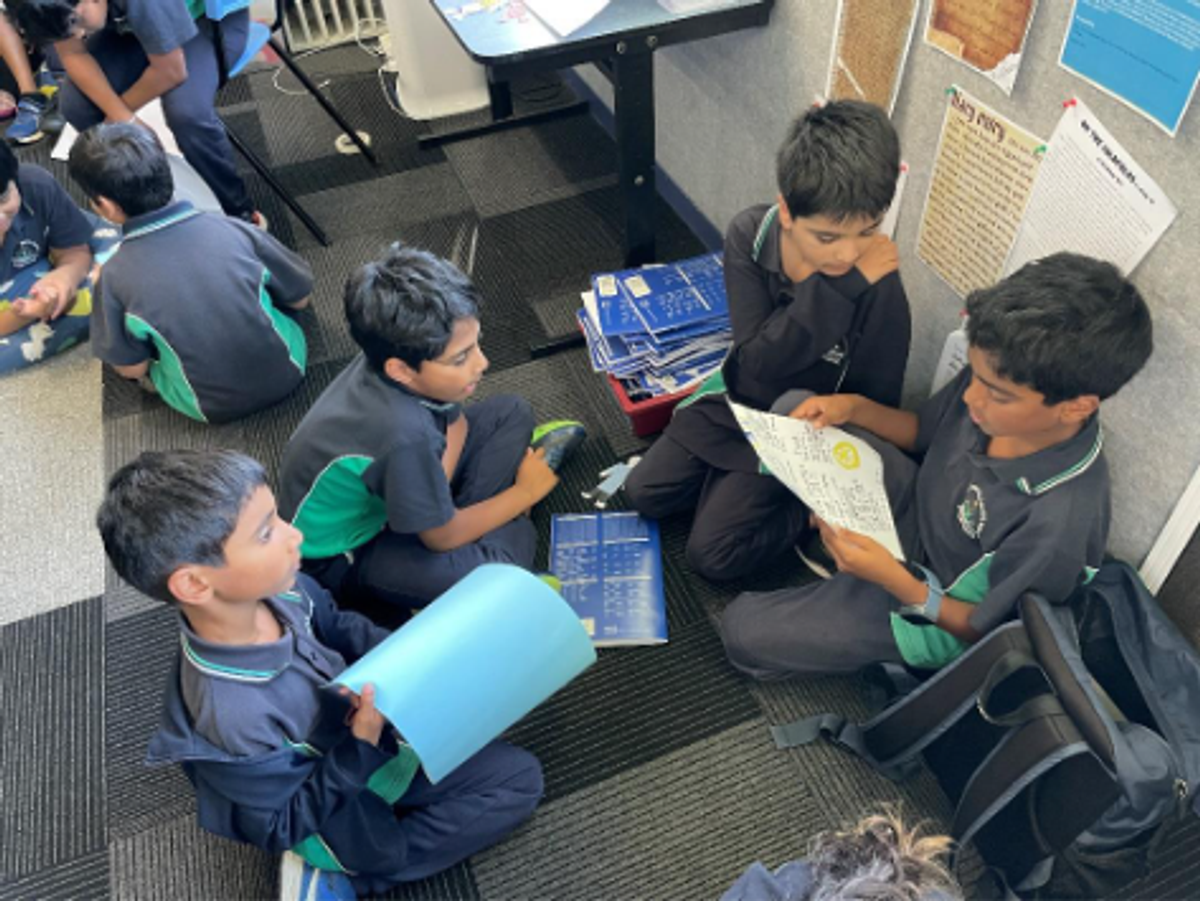Term Two
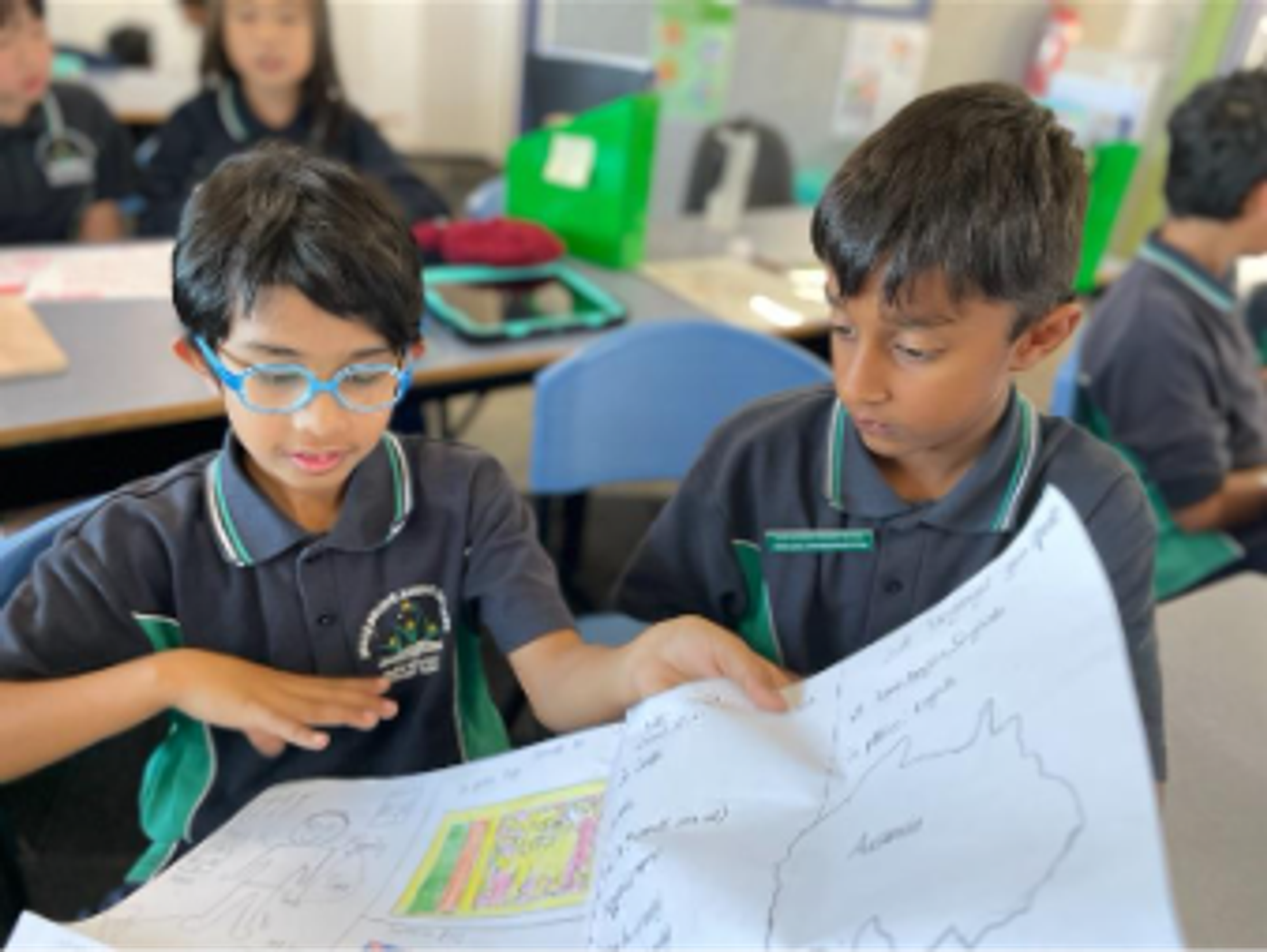
English
In Reading, the learners are excited to be stepping into the world of Literature Circles for the first time. In Literature Circles, students are split into groups of 5 or 6 and are each supplied with their own copy of a group novel. They will each be given a role to focus on in the group, which helps develop a particular reading skill. The roles are as follows:
- Discussion General/Question Guy: Guide the group discussion by coming up with a list of questions to ask the other member and encouraging each member to share their voice.
- Figurative Frog: Explores different types of figurative language in the text and how it is used to engage the reader.
- Word Wizard: Explores new, interesting or unfamiliar words and their definitions to build a deeper vocabulary understanding.
- Fortune Teller: Analyse the text and use evidence to make predictions about future parts of the story and the actions and emotions of characters.
- Inference Maker: Analyse the text to justify inferences about the way character’s act, feel and think.
- Character Tracker: Analyse the characters in the story to describe their personality and track how the characters change throughout the book.
- Theatrical Themes: Analyse the main themes and messages the text is trying to communicate to the reader.
Throughout the term, students will have the opportunity to experience multiple roles in Literature Circles. As part of the Literature Circles expectations, learners should be ensuring they are prepared for discussions by performing their role in the lead up to discussion sessions.
In Term Two Writing, students will be exploring the art of storytelling through narrative writing. They will learn how to craft engaging story openings and satisfying endings, while using their imagination to bring characters and settings to life. Throughout the term, we will focus on building strong story structures and helping students convey a clear theme or message to their readers. Students will be encouraged to think creatively and reflect on the lessons their stories can share with others. Learners will also be working to create engaging information reports, focusing on including key information and features that are frequently found in non-fiction texts, such as titles, sub-headings, indexes, glossaries, data, graphs, photos, maps and diagrams.
Key Vocabulary:
- Narrative
- Orientation (beginning)
- Complication (problem)
- Resolution (solution)
- Character
- Setting
- Plot
- Theme
- Message / Lesson
- Dialogue
- Imagination
- Hook / Story opener
- Ending / Conclusion
- Descriptive language
- Sensory details
- Point of view
- First person / Third person
- Transition words
- Show, don’t tell
- Narrator
- Conflict
- Title
- Sub-heading
- Index
- Glossary
- Diagram
How can you support your child’s writing at home?
- Encourage storytelling: Ask your child to share stories from their day or make up imaginative tales. This builds confidence and creativity.
- Talk about books and movies: Discuss the characters, setting, and what lesson or message was shared. This helps your child think like a writer.
- Write together: Whether it’s a short story, a letter, or a silly poem, writing with your child shows that writing can be fun!
Mathematics
In Term Two Mathematics, students will continue to follow the I Do/We Do/You Do explicit instructional cycle. As previously explained, this approach to teaching Mathematics is based on the science of learning and empowers students to feel confident in their mathematical learning, providing opportunities for frequent revision of past topics, step-by-step instruction when learning new content and topics, and allows for immediate feedback for misconceptions and misunderstandings. The topics to be covered in Term Two are as follows:
- Time: Time is used to quantify, measure, or compare the duration of events or the intervals between them.
- Fractions: The value of fractions can be compared by converting to equivalent fractions with common denominators.
- 3D Objects: 3D objects, including right prisms, have properties such as their cross-sections that can be used to describe and classify them.
- Decimals: The base ten place value system can be extended to decimals (tenths, hundredths and thousandths), to represent parts of whole numbers; calculation strategies can be applied to addition and subtraction of decimal numbers.
- Probability: Theoretical probability can be calculated, placed on a numerical scale and compared to actual outcomes of chance experiments.
- Pattern: Repeating a sequence of steps can create identifiable number patterns that can be generalised with algebraic expressions.
Key Vocabulary:
| Time | Fractions | 3D Objects |
|
|
|
| Decimals | Probability | Pattern |
|
|
|
How can you support your child’s Mathematics learning at home?
- Practise telling time using both digital and analogue clock.
- Practise working out time duration, such as, how long till… and how long did … took.
- Ask your child to identify 3D shapes around your home and their properties.
- Encourage your child to explain their thinking and reasoning behind their calculations.
- Discuss the meaning and example of key vocabulary
Inquiry
Question: “How might we contribute to the thriving of flora and fauna?”
Global Goal: Life on Land
In Term Two Inquiry, learners will be exploring the world of plants and animals (flora and fauna) and the ways they adapt to survive on our planet. Learners will develop shared understandings of concepts such as survive vs thrive, native vs introduced species, adaptations and human impact. There is a particular focus on understanding native plants and animals to create a genuine connection with the importance our actions and habits have on impacting Australia and its ecosystem. Students are encouraged to take note of the local species of flora and fauna that they see to develop an understanding of our local habitats.
Learners will have the opportunity to take a deeper look at our native flora and fauna when we head out on an excursion to the Cranbourne Botanical Gardens, where we will participate in a guided tour all about experiencing the diversity and adaptations of animals and plants living in Australian landscapes.
Key Vocabulary:
- Flora
- Fauna
- Survive
- Thrive
- Native
- Introduced
- Urbanisation
- Ecosystem
- Adaptations
- Evolution
- Biosecurity
- Invasive
- Habitat
To support your child’s Inquiry learning at home, you could:
- Identify the plants and animals that you can find in your gardens and local parks.
- Research the adaptations that plants and animals made to fit in with a changing world.
- Identify some interesting native species and discuss what makes them interesting.
- Explore some of the key vocabulary for the unit and discuss what the terms mean.
Wellbeing
The Resilience Project
During Term Two, students will continue their journey with The Resilience Project, building their capacity in Gratitude, Empathy, Mindfulness and Emotional Literacy. It has been wonderful incorporating TRP into the first face-to-face lesson each week. It has provided opportunities for students to build deeper connections with peers through positive conversations and filling each other's buckets.
A focus this term will be to develop recognition of emotions in different situations, creating personalised strategies to cope and overcome the negative feelings associated with those emotions. We will also be recognising the seriousness of our feelings and situations using personalised catastrophe scales, which aim to put into perspective some of the worries people face throughout their lives.
Additionally, we aim to provide students with the tools they need to resolve conflicts with their peers. This is a goal identified through conversations with our Student Voice JSC representatives, and we hope that these tools will allow students to continue developing deep and meaningful relationships with their friends and families.
Cyber Safety Project
In addition to TRP, we continue to explore the online world through the Cyber Safety Project, which students embraced in Term One. This term the lessons will cover topics such as the importance of respecting others when posting online, the tricky task of discerning fact from fiction online and creating an understanding of the benefits and pitfalls of generative AI, particularly through a lens of online privacy.
These skills are becoming increasingly important for our young learners, and this program aims to put them in good stead for the future.
Key Vocabulary:
- Wellbeing
- Resilience
- Gratitude
- Empathy
- Mindfulness
- Emotional literacy
- Cyber safety
- Responsibility
- Integrity
- Mental health
- Generative AI
- Social media
You can support your child’s Wellbeing learning at home by:
- Asking them to discuss their day at school, trying to mainly focus on the positives that they are grateful for
- Have your own family GEM Chats at home, where you practise gratitude, empathy and mindfulness
- Access the TRP@Home portal, where you can find a range of activity ideas and media to share with your children - https://theresilienceproject.com.au/at-home/home-2023/


